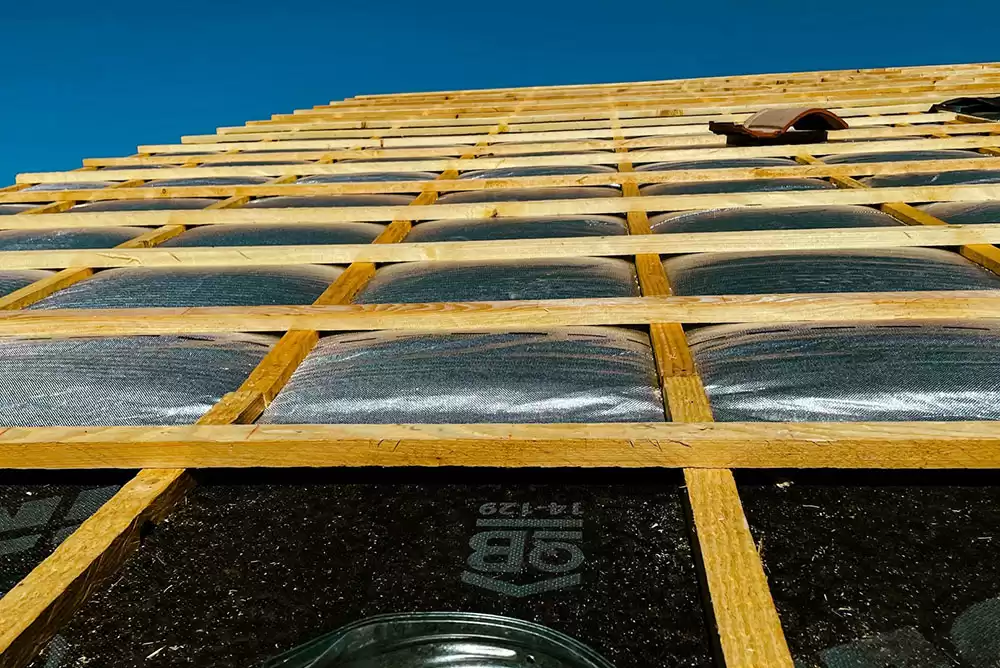Commercial roofing is a specialized field that goes beyond simply providing shelter for a building. In California, commercial roofs often serve a dual purpose — protecting the property from the elements and housing essential mechanical systems like HVAC units and ventilation equipment. This multifunctional use introduces unique challenges that property owners must address to maintain the roof’s structural integrity and waterproofing. From navigating the complexities of rooftop equipment placement to mitigating damage caused by routine maintenance, a commercial roof faces wear and tear that residential roofs never encounter. Understanding the types of commercial roofing systems available, the common issues they face, and the process of selecting the right contractor can help property managers and building owners make informed decisions that protect their investments for the long term.
Common Commercial Roofing Issues
Commercial roofs in California face unique challenges, primarily due to how they are utilized beyond their intended purpose. Unlike other regions, especially those with heavy snowfall, California rooftops often serve as platforms for mechanical systems such as air conditioning units, coolers, and other essential equipment. While this setup optimizes space and access for maintenance, it introduces potential risks to the roof’s integrity.
1. Rooftop Equipment Placement and Its Impact on Waterproofing
In many parts of the U.S., heating and cooling units are located on the ground or inside buildings, but in California, placing them directly on the roof is standard practice. This arrangement poses a unique challenge. Mechanical systems are installed and maintained by HVAC, electrical, or plumbing contractors whose primary focus is ensuring the system operates correctly — not preserving the roof’s waterproofing.
Unfortunately, this oversight can compromise the roof’s integrity. When contractors cut, drill, or modify roof sections to accommodate mechanical systems, they may inadvertently damage the waterproof barrier. Over time, even minor breaches can expand, leading to water infiltration and costly repairs. Since the roof is being used as a platform rather than a protective system, its original function as a barrier against moisture is often overlooked.
2. Damage from Routine Maintenance and Neglected Housekeeping
Another common issue arises from the routine maintenance of rooftop systems. Service visits for air conditioning units, ventilation systems, and other rooftop equipment typically occur quarterly. During these visits, contractors may leave behind old filters, empty tanks, screws, or other discarded materials. While this behavior may seem minor, it poses significant risks. Leftover debris can puncture the roof’s surface, create trip hazards, and contribute to wear and tear.
Over time, even small punctures can evolve into major issues like leaks, especially during heavy rainfall. This “dumpster effect” — where the roof is treated as a storage ground for discarded parts — accelerates roof deterioration and increases the likelihood of costly repairs or premature replacement.
Types of Commercial Roofing Systems
When it comes to commercial roofing, three primary systems dominate the industry. Each system offers distinct benefits depending on the building’s needs, budget, and environmental conditions.
1. Cap Sheet Roofing Systems
Cap sheet roofing systems are the most widely used type of commercial roof. These systems can take the form of a built-up roof (BUR) or a modified bitumen roof, both of which provide strong waterproofing and durability. The cap sheet — a top layer of protective material — is designed to withstand weathering, UV exposure, and heavy foot traffic. This roofing type is valued for its proven track record of reliability and its ability to handle a wide range of environmental conditions.
2. Single-Ply Roofing Systems
Single-ply roofing systems have grown in popularity due to their lightweight design, energy efficiency, and ease of installation. The two most common types of single-ply membranes are:
- TPO (Thermoplastic Polyolefin): Known for its reflective properties, TPO helps reduce cooling costs by reflecting UV rays. It is also resistant to punctures, tears, and chemical exposure.
- PVC (Polyvinyl Chloride): PVC roofs are highly durable, offering resistance to moisture, fire, and harsh chemicals. They are often chosen for buildings that require strong protection against grease, oils, or industrial pollutants.
Both TPO and PVC systems are installed as large, flexible sheets that are heat-welded at the seams, creating a watertight barrier.
3. Roof Coating and Cold Process Systems
Roof coating systems, sometimes called cold process roofing, are typically used as restoration systems rather than standalone roofing solutions. These coatings — made from materials like acrylic, silicone, or polyurethane — are applied directly over existing roofs to restore waterproofing and extend the roof’s life. They provide an added layer of protection, reduce UV damage, and can significantly delay the need for a complete roof replacement. This approach is often a cost-effective solution for commercial property owners looking to maximize the lifespan of their existing roof.
Commercial Roofing Process
The commercial roofing process follows a series of essential steps, regardless of the material being used. While the specific techniques may vary depending on whether it is a new installation or a re-roofing project, certain core elements remain consistent throughout.
1. On-Site Setup and Material Delivery
Every commercial roofing project begins with the preparation of the job site. This includes:
- Staging Workers and Equipment: Crews set up a work area with tools, safety gear, and designated spaces for materials. Trucks, equipment, and support vehicles are also stationed nearby.
- Material Delivery: Roofing materials — whether cap sheets, single-ply membranes, or coating supplies — are delivered using semi-trucks, flatbeds, or cranes. Large equipment like cranes is essential to lift heavy materials onto the roof, especially for multi-story buildings.
This setup phase ensures that workers have everything they need to proceed efficiently and safely.
2. Roof Installation or Re-Roofing
The roofing process differs significantly depending on whether a brand-new roof is installed or an existing one is replaced.
- New Roof Installation:
- The process begins with installing curbs, platforms, and support structures to accommodate any future HVAC units, ventilation systems, or other rooftop equipment.
- Once the base roofing system is in place, the roofing crew finishes their work and leaves the site. This allows mechanical contractors to install the HVAC units or other equipment afterward, ensuring the roof remains intact.
- Re-Roofing (Replacing an Existing Roof):
- Re-roofing is a more complex process since it involves working around existing equipment and structures. HVAC units, vents, and other penetrations already in place must be carefully accounted for to maintain the roof’s waterproofing.
- Roofers must ensure that all these elements are “roofed in,” — meaning the roof membrane or material is correctly sealed around each component to prevent leaks. This requires careful precision and strategic planning, especially when equipment can’t be moved or lifted.
The primary difference between these two processes lies in the sequencing of equipment installation. New installations are more straightforward because the roof is installed before any equipment is added. Re-roofing requires working around pre-existing equipment, which makes it more time-consuming and technically challenging.
3. Waterproofing and Leak Prevention
No matter the type of roofing system being installed, waterproofing is a top priority. Roofers must navigate common obstacles, such as:
- Roof Drains: Ensuring proper drainage is essential to prevent water pooling. Roofers work around these drains to maintain adequate water flow.
- Penetrations and Roof Curbs: HVAC units, vent pipes, and other penetrations require precise waterproofing to prevent leaks.
- Equipment Integration: In re-roofing projects, roofers seal roofing materials around HVAC units and other fixed elements to create a continuous waterproof barrier.
The process for managing these elements varies depending on the material being used. For example, single-ply membranes (like TPO or PVC) are heat-welded at seams around drains and penetrations. At the same time, cap sheet systems require additional layers of bitumen or adhesive to form a watertight seal.
How to Choose a Commercial Roofing Contractor
Selecting a commercial roofing contractor is one of the most important decisions a property owner or facility manager can make. With so many variables at play — from the type of roofing system to the property’s unique demands — it is essential to choose a contractor with the right experience, credentials, and capability to meet your specific needs. Here are the key factors to consider when making your decision.
1. Experience, Licensing, and Certifications
Start by ensuring the contractor has the proper credentials. Look for:
- Years in Business: A long track record demonstrates experience, stability, and a proven ability to complete projects successfully. Companies with established reputations are more likely to have encountered and resolved various challenges.
- Licensing and Insurance: Verify that the contractor holds the appropriate licenses and insurance required to operate legally in your state. Licensing ensures compliance with local regulations, while insurance protects you from liability in case of an accident.
- Manufacturer Certifications: If a contractor is certified by the manufacturer of a specific roofing system (like TPO, PVC, or cap sheet systems), it indicates that the manufacturer trusts them to install the product according to best practices. This certification often comes with extended warranty benefits for you as the property owner.
These qualifications ensure the contractor has the skills and authority to install the roofing system correctly, reducing the risk of costly errors.
2. Proven Experience with Similar Projects
Not all commercial roofing projects are the same. While one building may be a large, open warehouse, another may be a complex food processing facility with a maze of pipes, vents, and specialized equipment. Choosing a contractor who has handled projects with a similar scope and complexity is essential.
- Project Portfolio: Ask the contractor for examples of past work similar to your project. Suppose they have only worked on flat, open warehouses, but your project involves a facility with numerous rooftop penetrations (like vents, HVAC units, or utility pipes). In that case, they may not have the technical expertise needed.
- Client References and Reviews: It can be challenging to obtain referrals, but asking for references from past clients with similar properties is worthwhile. You will want to hear firsthand how well the contractor managed the project, whether they stayed on schedule, and how they handled challenges along the way.
This step ensures that the contractor is prepared to handle the specific demands of your project, minimizing the likelihood of delays or unexpected complications.
3. Ability to Handle Unique Environmental Conditions
For certain commercial properties, roofing work requires a higher level of precision. If your property operates with strict environmental controls — like a clean room, medical facility, or food processing plant — your contractor must be familiar with working in sensitive environments. This includes managing:
- Debris Control: Ensuring no dust, debris, or contaminants enter the workspace below.
- Odor and Vapor Management: Some facilities (like food processing plants) cannot tolerate strong odors or chemical fumes. Contractors must use low-odor materials or plan for adequate ventilation.
- Noise Minimization: Facilities that operate 24/7, like medical centers or clean rooms, often require quieter roofing processes to avoid disruption.
These unique demands mean that not all roofing contractors can handle the project. If your building requires specific environmental controls, ask the contractor to explain their strategy for keeping your facility compliant.







